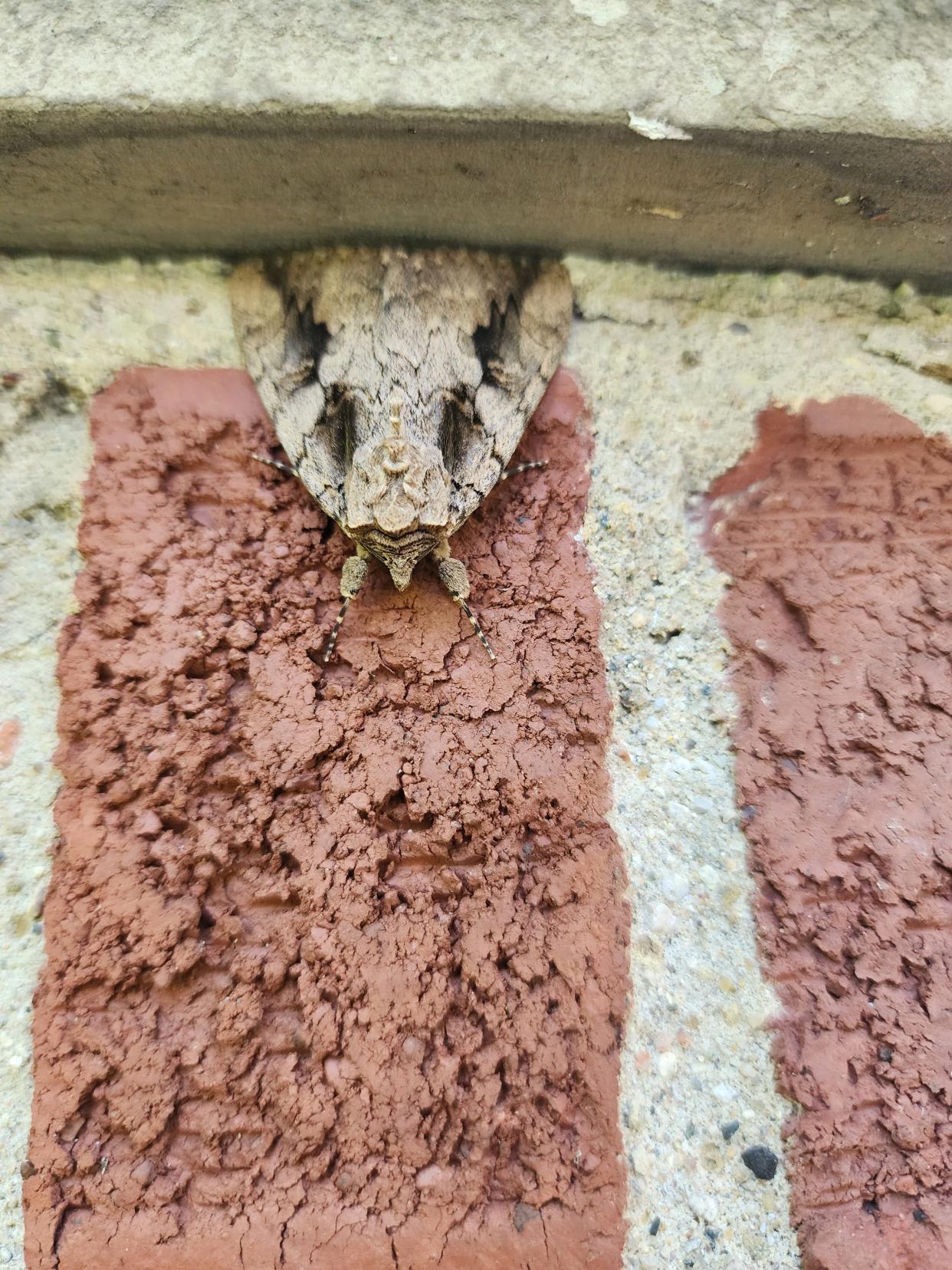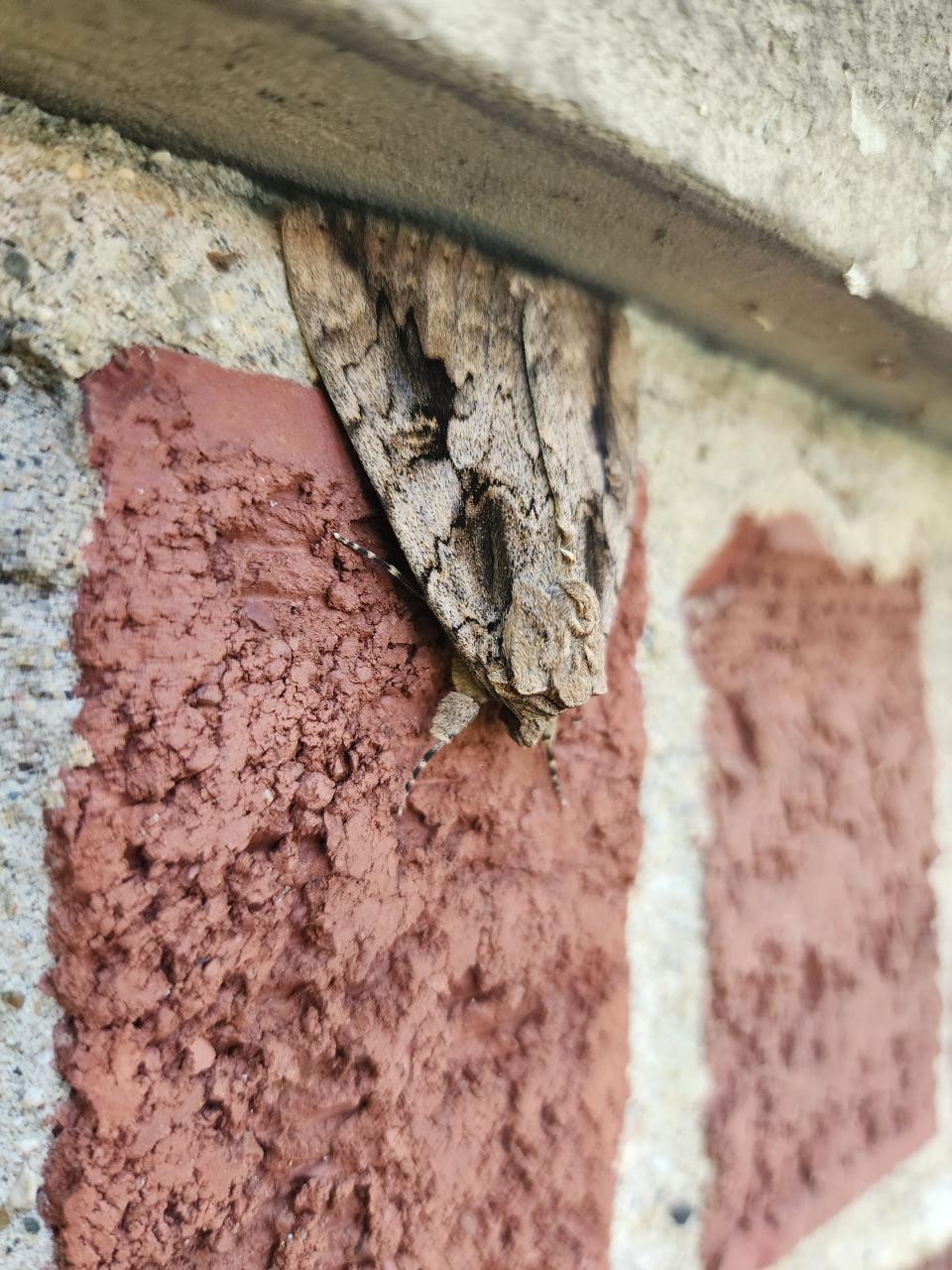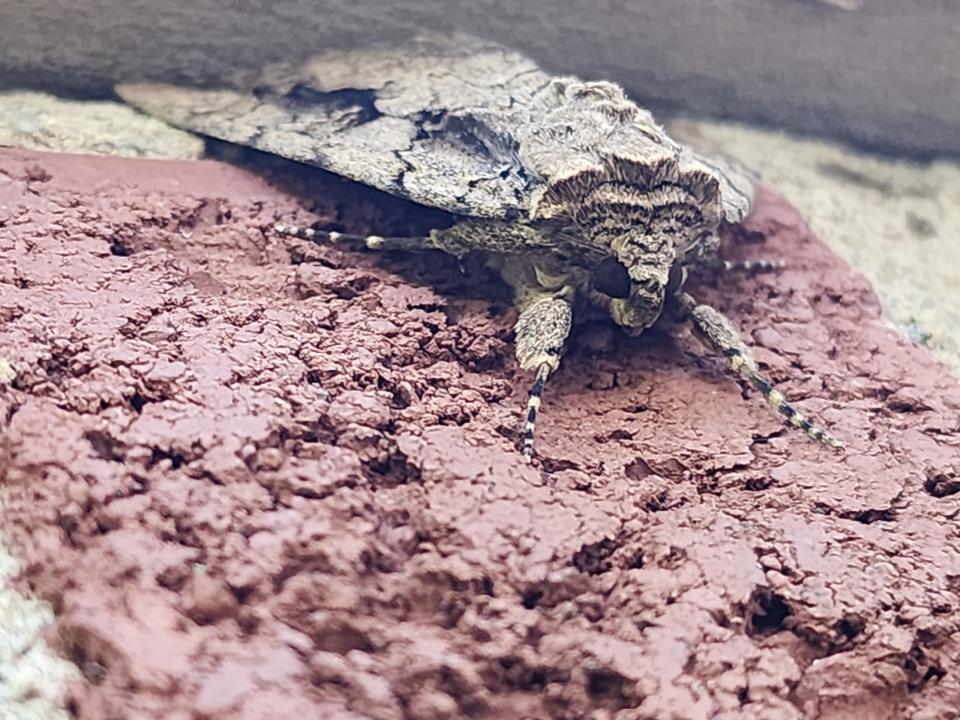She saw a snake's head coming out of her brick wall. Then it got weirder.

Doing some gardening Sunday outside her home in Oakland County's Commerce Township, Cathryn Daisy got quite a start."I went to get a pair of pruning shears and turned my head and almost fell over thinking a snake was coming out of the brick," she said with a laugh.
Daisy took photos of what she saw. Sure enough, it looks like the shape of a snake's head, and even has the appearance of scales. But upon closer inspection, she recognized it was a moth.
Posting about it on a community Facebook page, residents identified it as a sweetheart underling moth — usually more renowned for the bright, orange-ish colors on its underwings, typically hidden until its larger wings are more spread. The moths are found in most of the U.S. except the West Coast and parts of southernmost Canada. Adults can have a wingspan of about 3 to 4 inches.

With Daisy's permission, the Free Press shared her photos with Michigan State University entomologist (bug scientist) Howard Russell at Michigan State University.
"That is a very cool photo! And, against the brick background, it definitely looks like a snake's head," he said.
More: Poison hemlock common in Michigan — and dangerous: What to know about symptoms, treatment
More: CDC: Toxic blue-green algae is infecting humans, animals in Michigan summers
Many insects and other animals practice mimicry — looking a lot like another animal or plant for different reasons: to attract prey, to scare off predators or to stay hidden. "The larvae of the giant swallowtail butterfly have a different strategy; they mimic bird poop to avoid being eaten," Russell said.
But the sweetheart underling moth that Daisy photographed, and its uncanny resemblance to a snake head, is more coincidental than intentional, Russell said.
"I think the moth's coloration is meant to mimic tree bark where the moths typically hang out," he said.

Contact Keith Matheny: kmatheny@freepress.com.
This article originally appeared on Detroit Free Press: Sweetheart underling moth gave Oakland County woman a surprise

